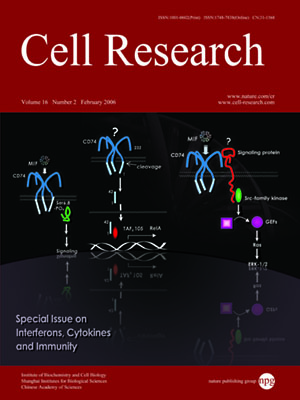
Volume 16, No 2, Feb 2006
ISSN: 1001-0602
EISSN: 1748-7838 2018
impact factor 17.848*
(Clarivate Analytics, 2019)
Volume 16 Issue 2, February 2006: 203-213
REVIEWS
How the Bcl-2 family of proteins interact to regulate apoptosis
Mark F van Delft1,2, David CS Huang1
1The Walter and Eliza Hall Institute of Medical Research, 1G Royal Parade, Parkville, Victoria 3050, Australia; 2Department of Medical Biology, University of Melbourne, Parkville, Victoria 3010, Australia
Correspondence: David CS Huang(huang_d@wehi.edu.au)
Commitment of cells to apoptosis is governed largely by protein-protein interactions between members of the Bcl-2 protein family. Its three sub-families have distinct roles: the BH3-only proteins trigger apoptosis by binding via their BH3 domain to pro-survival relatives, while the pro-apoptotic Bax and Bak have an essential downstream role involving disruption of organellar membranes and induction of caspase activation. The BH3-only proteins act as damage sensors, held inert until their activation by stress signals. Once activated, they were thought to bind promiscuously to pro-survival protein targets but unexpected selectivity has recently emerged from analysis of their interactions. Some BH3-only proteins also bind to Bax and Bak. Whether Bax and Bak are activated directly by these BH3-only proteins, or indirectly as a consequence of BH3-only proteins neutralizing their pro-survival targets is the subject of intense debate. Regardless of this, a detailed understanding of the interactions between family members, which are often selective, has notable implications for designing anti-cancer drugs to target the Bcl-2 family.
Cell Research (2006) 16:203-213. doi:10.1038/sj.cr.7310028; published online 13 February 2006
FULL TEXT | PDF
Browse 1871


